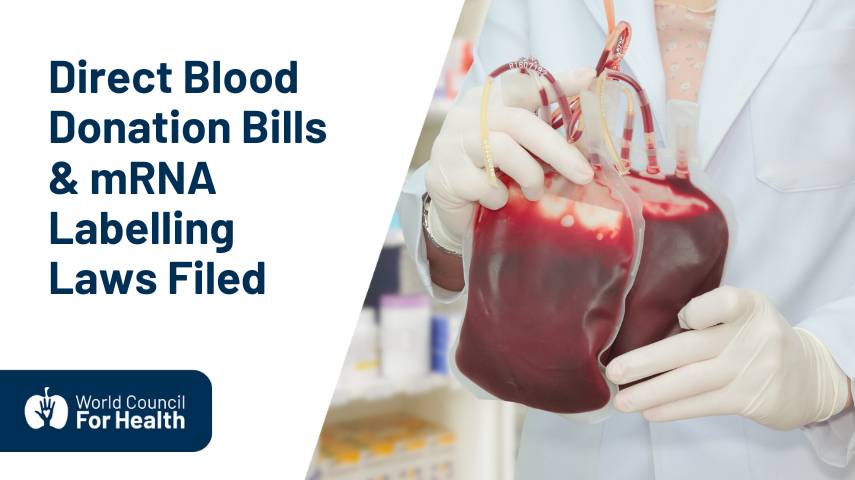What had been a steady downward trend accelerated in early 2022. Why?
Dr Maarten Fornerod
According to new data from Statistics Netherlands (CBS), there is a continuing downward trend in births per 100,000 inhabitants. This trend has been steady since 2010, but a graph of the last ten years shows a clear trend break from the beginning of 2022.
“That is about nine months after the corona vaccinations started for 15-50 year old men and women,” said immunologist Professor Theo Schetters (1). Schetters derived the graph below from the CBS figures, and it clearly shows that the number of births per 100,000 will remain low from 2022 onwards.

These data are consistent with research from Germany and Sweden showing that the birth rate fell from the beginning of 2022, nine months after vaccination campaigns began there (1a).
What could be the cause of the persistently low birth rate?
Everything but the jab
According to Schetters, one possibility that should be seriously investigated is the corona ‘vaccines’. Preclinical research in rats has already shown that the LNP vehicle that is the protective capsule for the mRNA accumulates in the ovaries (2).
In addition, cell biological research has shown that the spike protein strongly binds to the estrogen receptor and influences its functioning (3). This can lead to disruptions in both the male and female reproductive systems. Other 2022 research suggests that corona mRNA injections temporarily negatively affect sperm quality (4). Finally, menstrual complaints are very often reported as a side effect of the corona vaccines.
In October 2022, the European Medicines Agency (EMA) included menstrual disorders as a side effect of the mRNA vaccines. By then, the Netherlands side effects database Lareb had received 27,000 reports of menstrual complaints after vaccination. In addition to heavy bleeding, this often concerns absence of menstruation.
Thanks for reading World Council for Health! This post is public so feel free to share it.
To get an idea of how often this occurs, an Israeli research group (5) interviewed a group of women with an active menstrual cycle after their third Pfizer mRNA vaccination. 95 of them indicated that they normally had a regular cycle and 28 an irregular one. Of the first group, 40% reported changes in their menstrual cycle after the third vaccination. Of the second group, this was 53%. The changes were diverse, including longer or more blood loss or a higher frequency.
Nevertheless, these authors write that, as far as is known, there is no influence of Pfizer mRNA corona vaccines on fertility. However, the cited studies are small and/or not firm in their conclusions.
It is actually unimaginable that if such a high percentage of women experience menstrual disorders as a side effect, there would be no influence on fertility.
In addition, there is still insufficient knowledge about the safety of the corona injection for the unborn child, according to the Royal Dutch Society of Midwives (KNOV)(6). Lareb received 127 reports of spontaneous miscarriages after the injection. Fortunately, pregnant women are currently no longer invited for a corona vaccination as standard in the Netherlands (7).
The World Council for Health advocates discontinuing mRNA corona vaccinations due to the large number of side effects, including serious, unexplained excess mortality, unexplained birth rate decline and low effectiveness. WCH also advocates restraint with new mRNA vaccines until safety has been thoroughly, independently and transparently demonstrated.
dedicated to promoting health and wellbeing world wide
References
1. Toine de Graaf. “Geboortecijfers CBS niet objectief”. De Andere Krant, 3 augustus 2024, nr. 31, p. 15.
1a. Bujard, Martin; Andersson, Gunnar (2022): Fertility declines near the end of the COVID-19 pandemic: Evidence of the 2022 birth declines in Germany and Sweden. Stockholm Research Reports in Demography. Preprint. https://doi.org/10.17045/sthlmuni.20975611.v1
2. SARS-CoV-2 mRNA Vaccine (BNT162, PF-0 7302048): 2.6.5.5B. Pharmacokinetics: organ distribution continued, report number: 185350, Page 16. Available at: https://downloads.regulations.gov/CDC-2021-0034-1148/attachment_1.pdf. Accessed February 27 2023.
3. Solis O, Beccari AR, Iaconis D, Talarico C, Ruiz-Bedoya CA, Nwachukwu JC, Cimini A, Castelli V, Bertini R, Montopoli M, Cocetta V, Borocci S, Prandi IG, Flavahan K, Bahr M, Napiorkowski A, Chillemi G, Ooka M, Yang X, Zhang S, Xia M, Zheng W, Bonaventura J, Pomper MG, Hooper JE, Morales M, Rosenberg AZ, Nettles KW, Jain SK, Allegretti M, Michaelides M. The SARS-CoV-2 spike protein binds and modulates estrogen receptors. Sci Adv. Vol 8. Issue 48 (30 november 2022). https://www.science.org/doi/10.1126/sciadv.add4150
4. Gat I, Kedem A, Dviri M, Umanski A, Levi M, Hourvitz A, Baum M. Covid-19 vaccination BNT162b2 temporarily impairs semen concentration and total motile count among semen donors. Andrology. 2022 Sep;10(6):1016-1022. doi: 10.1111/andr.13209. Epub 2022 Jun 27. PMID: 35713410; PMCID: PMC9350322.
5. Bar-Joseph, H., Raz, Y., Eldar-Boock, A. et al. The direct effect of SARS-CoV-2 virus vaccination on human ovarian granulosa cells explains menstrual irregularities. npj Vaccines 9, 117 (2024). https://doi.org/10.1038/s41541-024-00911-2.
6. https://artsencollectief.nl/wp-content/uploads/2023/11/brief_knov_passende_zorg.pdf accessed 2024-08-09.
7. https://www.gezondheidsraad.nl/onderwerpen/vaccinaties/alle-adviezen-over-covid-19-vaccinaties/covid-19-vaccinatie-in-2024 accessed 2024-08-09.








